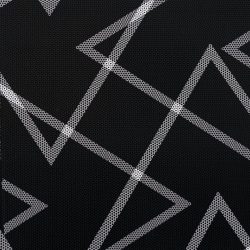Hi everyone! My name is Bingying (Iris) Wang and I live in Vancouver, BC. I have been in the higher education industry for over seven years. This (ETEC 540) is my eighth/ninth course in my MET journey.
What is my daily need for the items in my bag?
Here are the items from a bag I commonly carry. Please click on the items in the interactive image below for details.
These items in my bag act like implicit “texts” and provide cues about who I am, the places I inhabit, the culture I engage in, and the activities I take up.
Identification cards provide the most direct information (name, age, address, and other personal info) about who I am. Carrying pills shows that I have long-term headaches and stomach problems. Still carrying masks after the pandemic suggests that I am cautious; carrying perfume shows that I am sensitive to odours.
The navigation apps and the car keys provide information about the places I inhabit. I live in Richmond, where a car is essential for daily life because of insufficient transit. My fob indicates that I live in an apartment instead of a house.
Both Chinese and Canadian documents show that I engage in multiple cultures. The Costco membership card reveals that I go shopping regularly. Carrying Air pods indicates that I enjoy listening to music a lot.
Some of my items are enabled by technology; they explicitly or implicitly influence how I engage with language and communication.
Phone: I can communicate with other people in various ways, including text messages, instant messages, voice messages, voice calls, video calls, emails, social media, and location sharing. Moreover, I can communicate with systems. For example, Google Home enables me to turn on or off the speakers and lights in my apartment; I can use Eufy Security to check the inside of my home.
Bank cards: Digital communication between the cards and their respective systems granted me access to certain affordances of these technologies.
Key fobs: My apartment key fob works through the REID technology to provide me with access to the entrance, parking lot, garbage room and elevator (Awati & Hwang, 2021). The car key fob communicates with the car system, allowing me to unlock the doors and start the engine.
Current human literacies encompass a wide range of skills and knowledge areas beyond the traditional notion of reading and writing. Items in my bag indirectly indicate the key literacies I have.
Phone:
Digital literacy: Understanding how to use technologies effectively, including information searching, communication, and use of applications (Kapur, 2019).
Media literacy: critically analyze and understand various forms of media, including websites, social media, and news (Kapur, 2019).
Wallet and keys:
Financial literacy: Knowledge of personal finance, including saving, investing, budgeting, and managing debt.
Pills and Mask:
Health literacy: accessing, understanding, and applying health information to make correct health judgements or decisions in one’s daily life (Kapur, 2019).
Perfume and Air pods:
Emotional literacy: the ability to understand and effectively communicate emotions and empathize with others (Kapur, 2019).
Official documents from different countries:
Cultural literacy: knowledge and understanding of cultures with different traditions, beliefs, values, and standards (Kapur, 2019).
Legal literacy: knowledge of the basic legal system in one’s country.
I would say the narrative of the contents of my bag is incomplete; it is only a part of the narrative produced by the image I outwardly project.
There are things I use daily but cannot be carried in a bag; they provide additional information about me. For example, I carry my cue case daily in the car because I am a pool player. I practice pool more than four times weekly in the local pool halls and join large-scale pool tournaments approximately every four months. Also, I use my iPad for painting; Procreate is the app I use the most. All my tattoos were designed by myself, showing my capacity to generate new ideas (creative literacy).
Past
Fifteen years ago, I was an elementary school student. All I had in my bag then were school supplies, such as textbooks, pens, notebooks, etc.

Based on my memory (of my parents’ items), the equivalent of these items in my bag from 15 years ago were way less integrated. For example, the most popular mobile banking product was SMS banking before 2010 (Team, 2023). Most of the time, people needed to go to banks in person for card services due to the limited functions of SMS banking. In contrast, people can now use online banking apps to easily manage accounts, transfer funds, pay bills, check deposits, view transactions, and manage cards. Another example would be the resolution in pixels of the mobile phone camera, which changed from 320 x 480 to 1290 x 2796 (AppMySite, 2023). Except for professional photographers, people no longer need to buy an extra camera.
Future
 I imagine an archeologist aiming to understand this temporal period might view my items in a similar way as I view those equivalent things (as I mentioned above) from 15 years ago. The archeologist may think that many of my items have limited functions or can be combined into an integrated product. For example, tangible bank cards might be ousted completely; people only need online banking apps. I believe that as technology develops, items people carry daily in bags will become more integrated.
I imagine an archeologist aiming to understand this temporal period might view my items in a similar way as I view those equivalent things (as I mentioned above) from 15 years ago. The archeologist may think that many of my items have limited functions or can be combined into an integrated product. For example, tangible bank cards might be ousted completely; people only need online banking apps. I believe that as technology develops, items people carry daily in bags will become more integrated.
References
AppMySite. (2023). The complete guide to iPhone screen resolutions and sizes (Updated for 2023). AppMySite. https://www.appmysite.com/blog/the-complete-guide-to-iphone-screen-resolutions-and-sizes/
Awati, R., & Hwang, D. (2021). key fob. Security. https://www.techtarget.com/searchsecurity/definition/key-fob
Kapur, R. (2019). Types of literacy. ResearchGate. https://www.researchgate.net/publication/332875093_Types_of_Literacy
Team, C. (2023). Mobile banking. Corporate Finance Institute. https://corporatefinanceinstitute.com/resources/wealth-management/mobile-banking/

